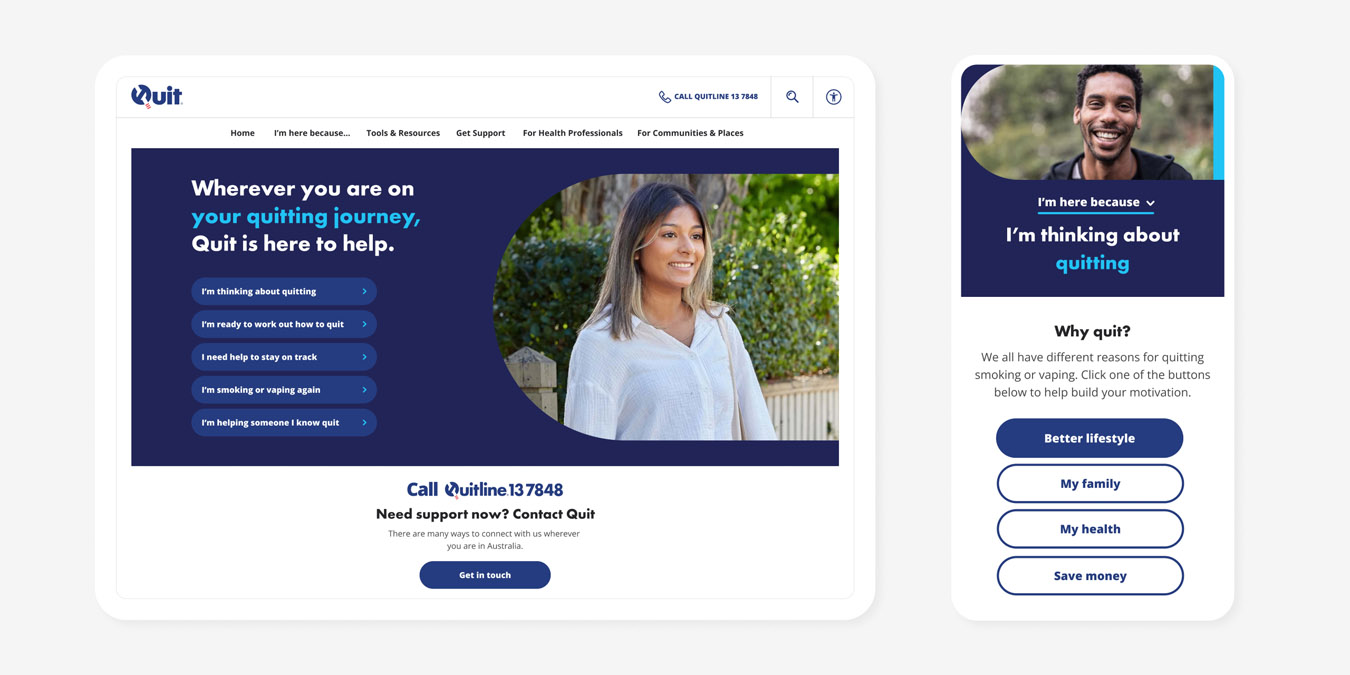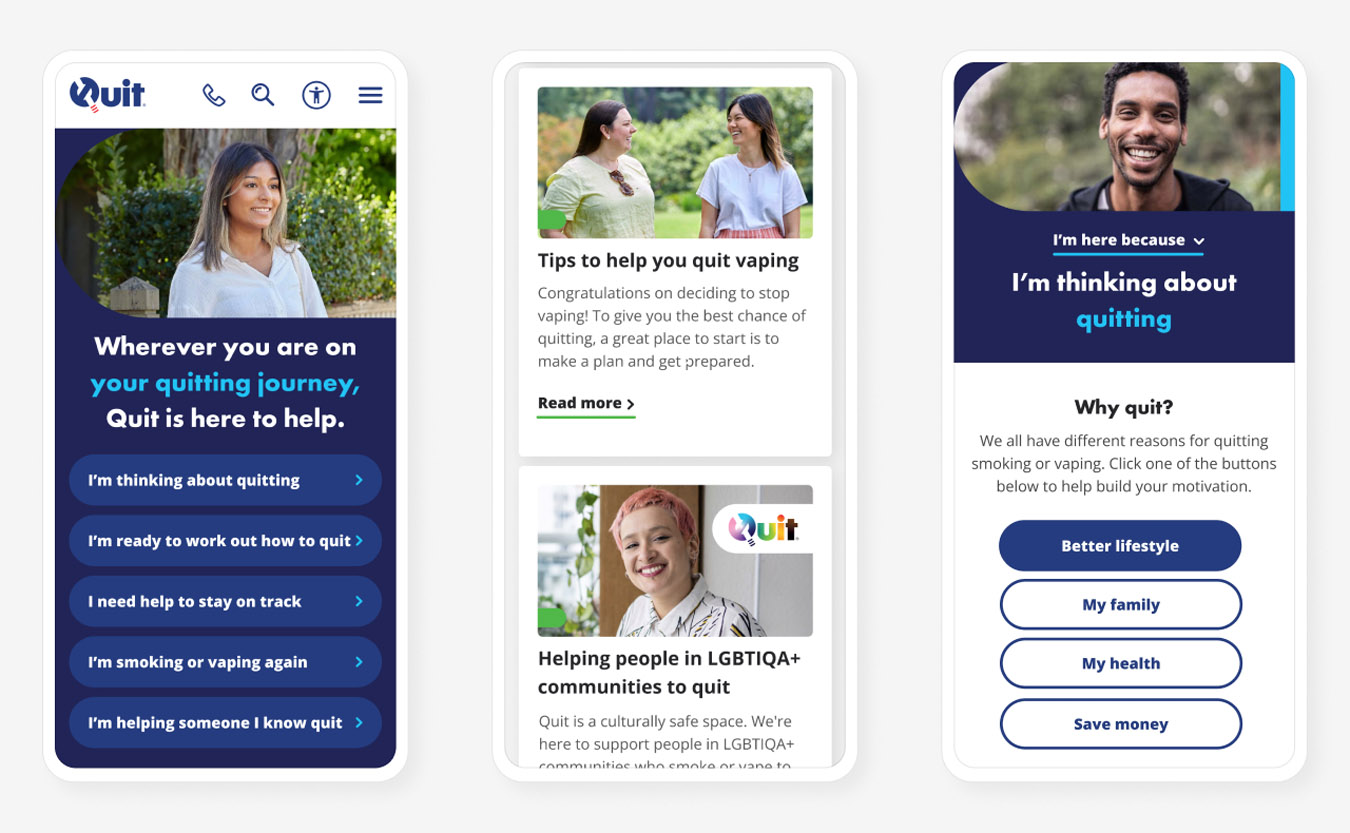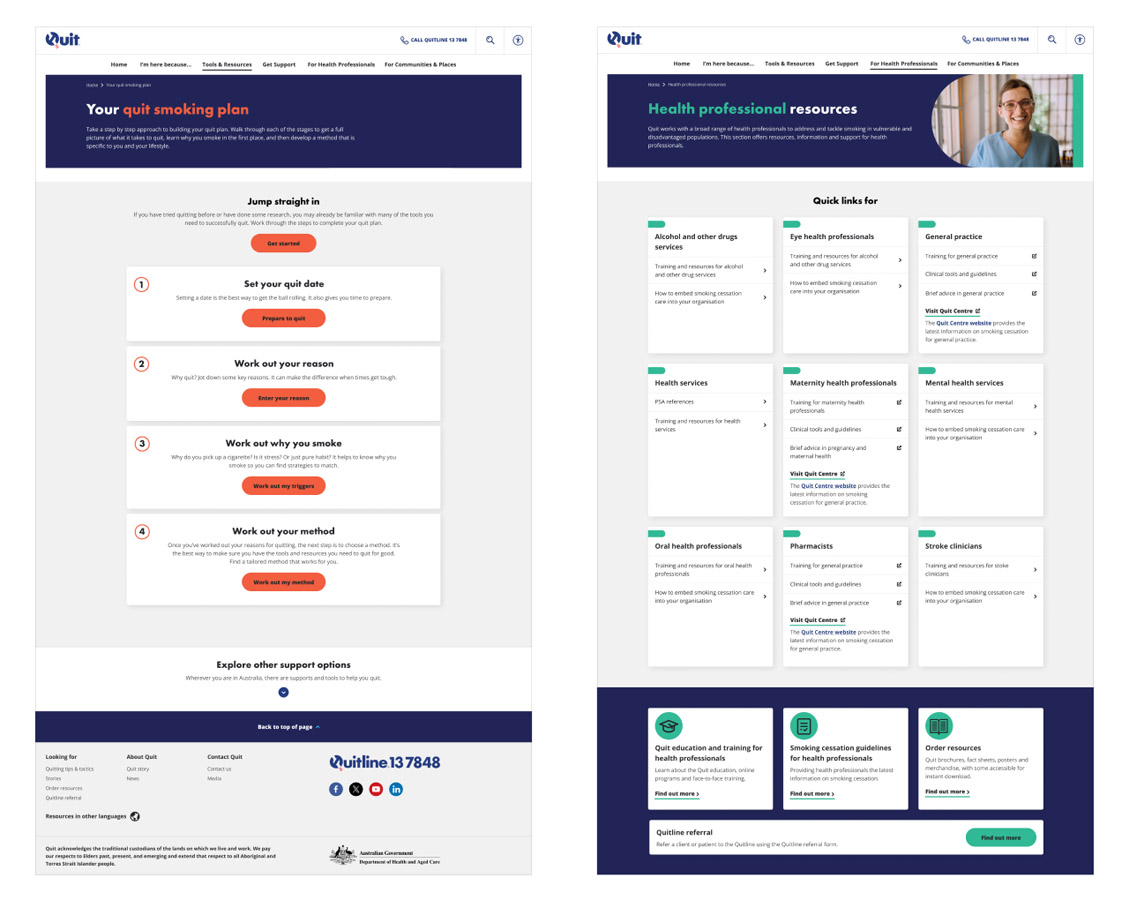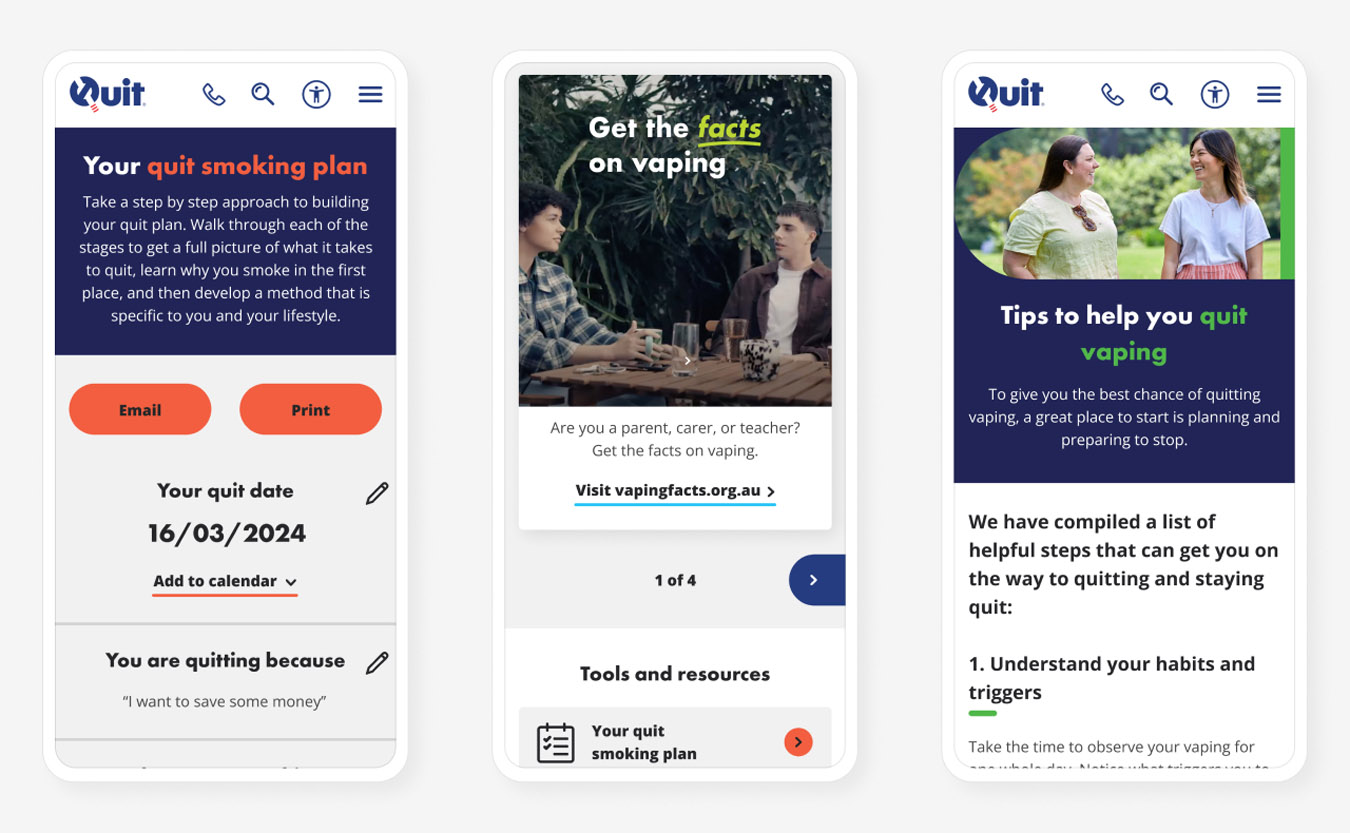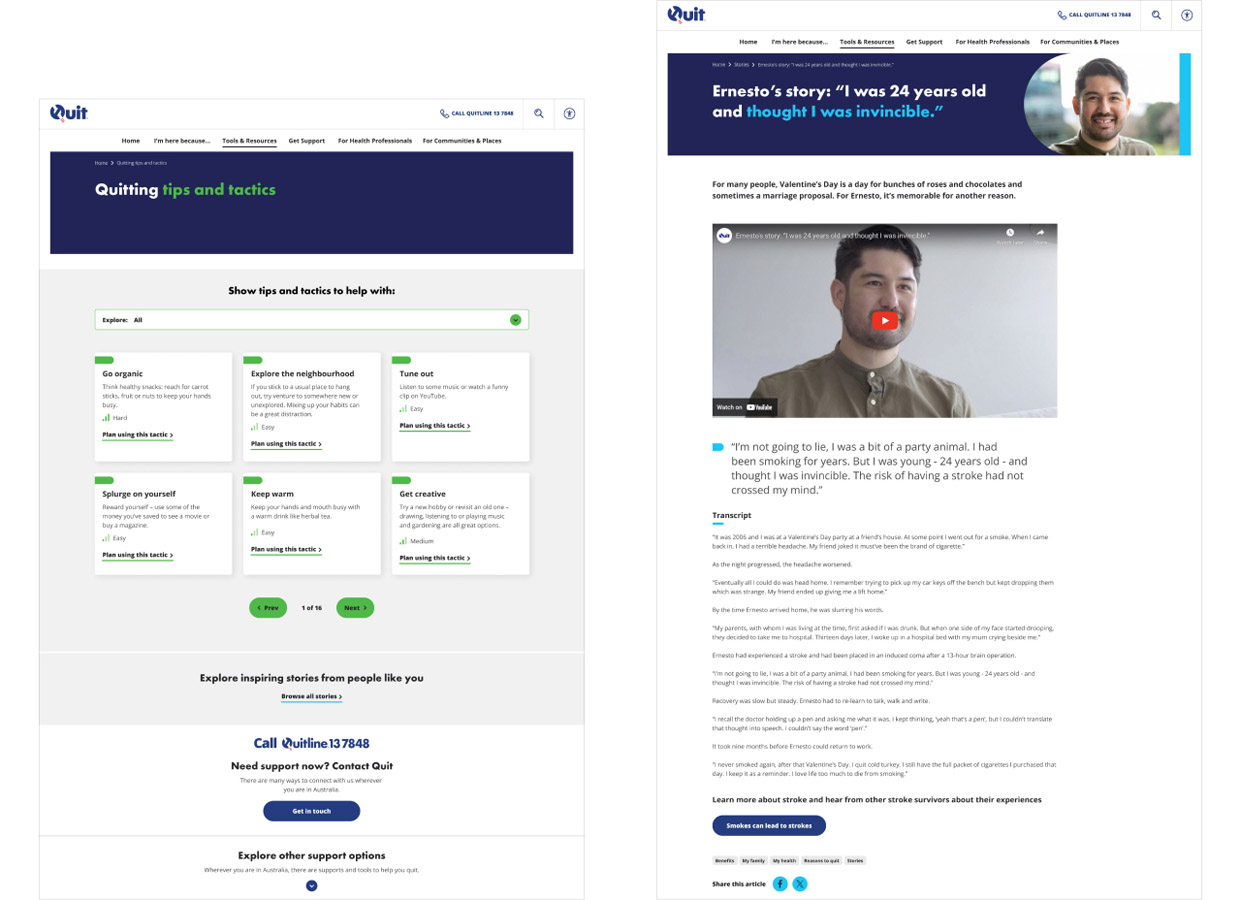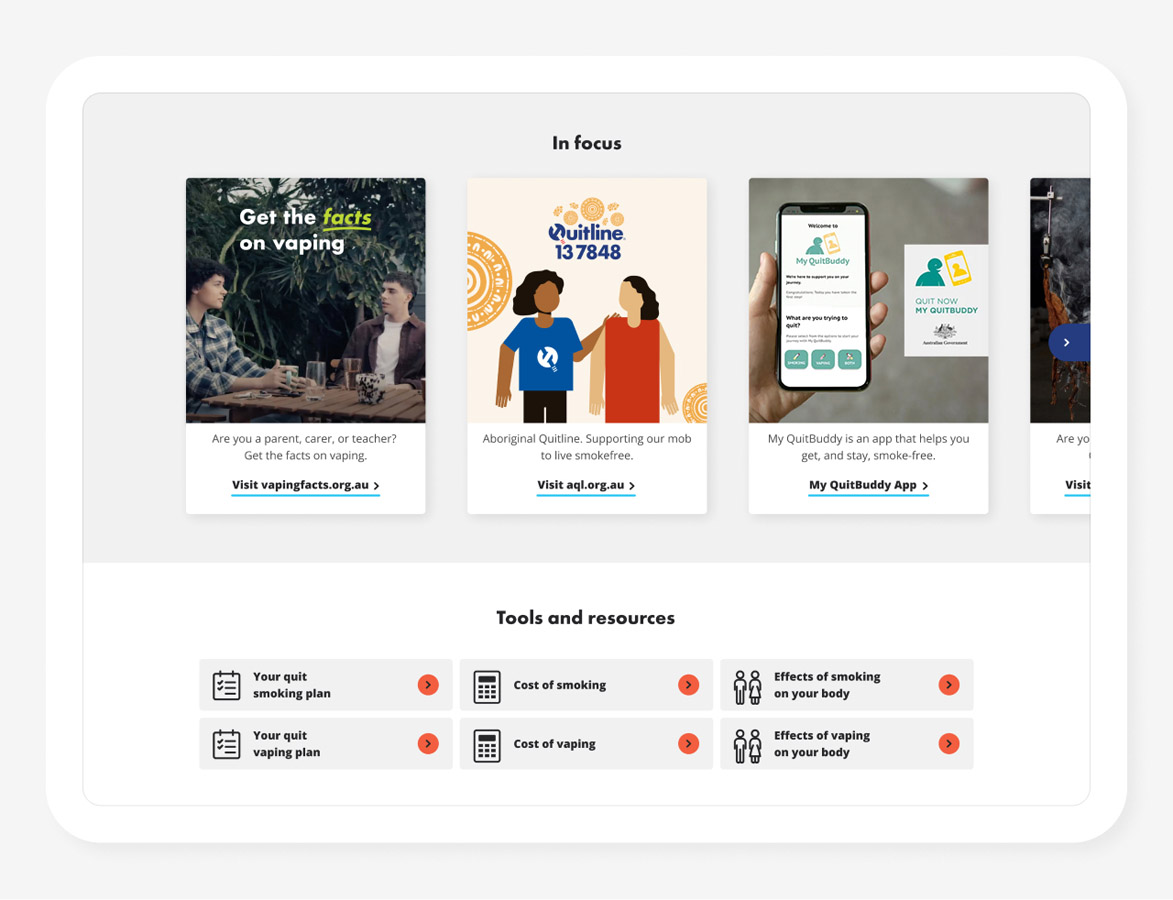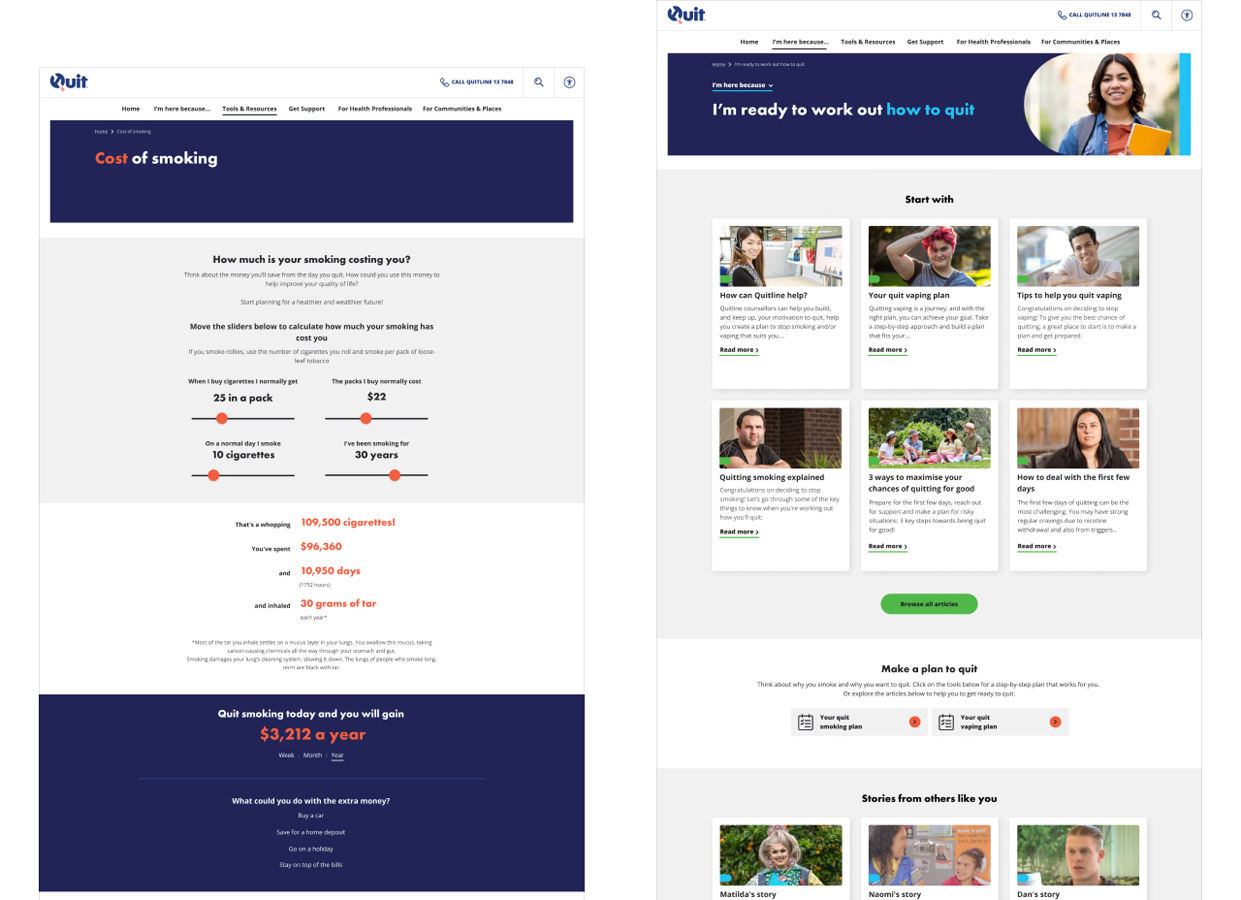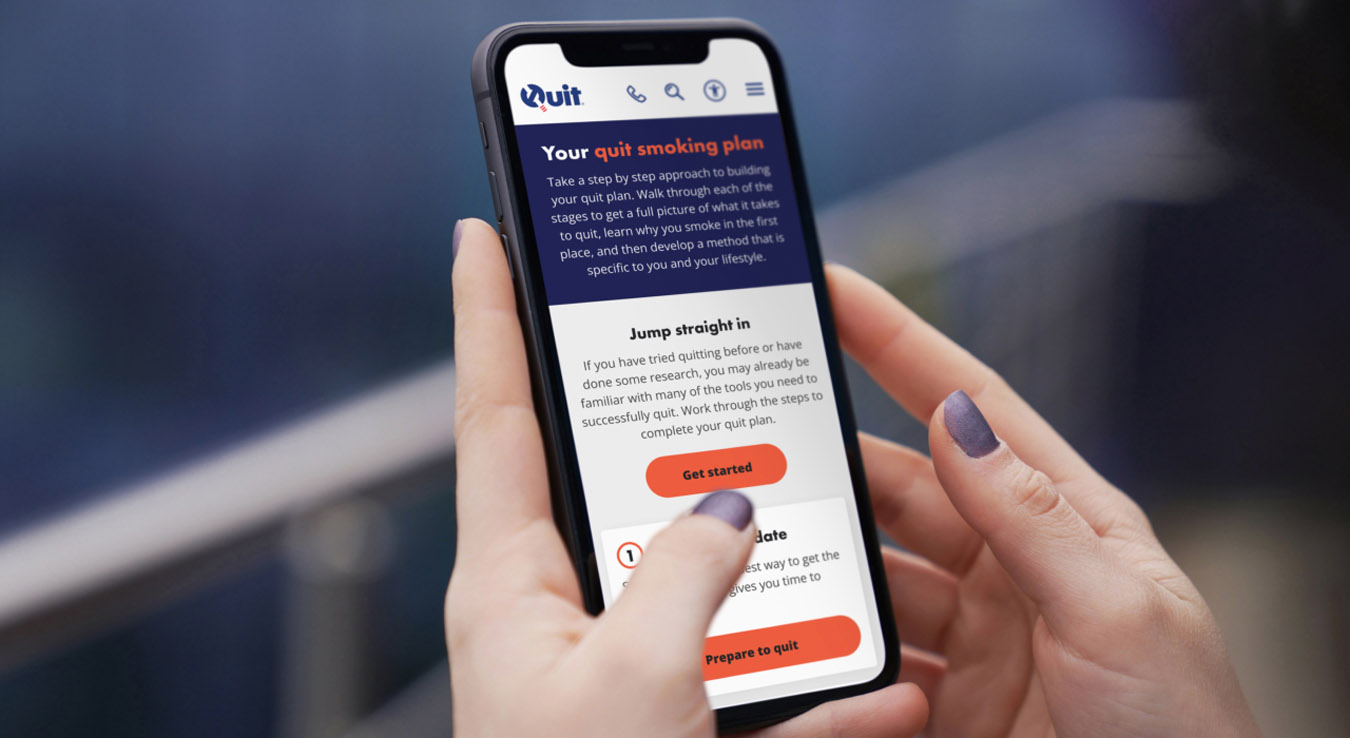Updating a brand that has traditionally appealed to older smokers meant truly understanding how new audiences needed to find the information they were looking for, feel supported, and reach out to Quit using the website. With the emergence of youth vaping, it was important that contacting Quitline evolved with its audience. Audiences can now gain support from Quitline through many channels, including phone, chat, text, callback, WhatsApp, and Facebook.
Quit recognises the need to provide audience-specific information that is friendly, non-judgmental, inclusive, and culturally safe. Quit worked closely with audiences and health professionals to ensure that content on the website and support provided through Quitline are relevant to all Australians, including LGBTIQA+ individuals, Aboriginal and Torres Strait Islander people, linguistically diverse communities, young people, and people with complex needs. With such a diverse user group, it was important that user testing was conducted with all groups and that feedback was sought on the best ways to communicate with each audience.
Separate user testing was completed with health professionals to better understand the evolving information and education needs of health professionals to support their patients and communities through smoking and vaping cessation.
Quit provides a number of interactive tools to support people’s quitting journeys. This includes a plan to identify triggers, understand more about nicotine addiction, and define strategies to support quitting. A calculator provides an incentive to quit by demonstrating the cost of smoking and how that money could be better spent. Health professionals now have a dedicated section of the site to provide health advice, education, and resources specific to different health sectors.
The Quit website is also supported by a separate vaping facts website, providing parents and carers with facts on vaping to educate them about the harms of vaping and debunk the myths that many people believe.

